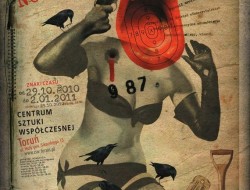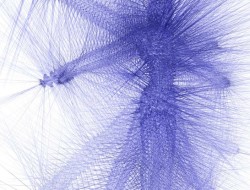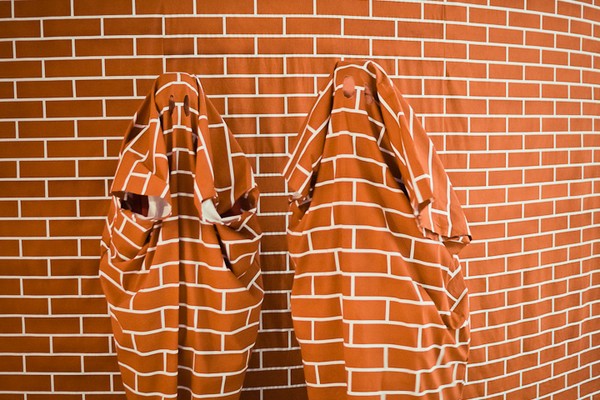artists: Dinie Besems, Cynthia Hathaway, Guy Keulemans, Bartosz Mucha, Leonard van Munster, Eric von Robertson, Suzuki Åffice
curated by: Joanna van der Zanden & Agnieszka Pindera
design: Rafał Jara & Urszula Karniej
opening: 3rd December, 7 PM
Say “Tag!” and any place on earth will transform into a playground. Objects swiftly loose their original function and meaning, and are altered either into obstacles or hiding components. A trivial object is pointed out to become the “Base”, and is democratically chosen as the
centrepiece. The place becomes an experience, one that is defined by the players and not by the architect, designer, or city planner. And while playing the game, new perceptions of the space and place will come into view and size and structure of architecture and objects are actively reconnected to our bodies. Playing “Tag” or “Hide and seek” is probably the most unpretentious way of exploring the creative potential of any space.
On another level, to hide oneself in a creative way can also be a necessity to find a private moment now our societies are becoming more and more open and public. It forces us to discover and create new kinds of personal shelters. While going out and play freely is more difficult nowadays because of over-regulated cities, where each stone is carefully planned and cameras supervise public space. So playing and hiding in the way we would do as children has become more a game of activism then of innocent play.
The project Tag! Base! Hide and Seek is an attempt to explore room for play within a formal institutional setting and to get away from the dogma’s of visiting an exhibition in silence and passively following the narrative of the curator. It will encourage visitors to move, act, observe, communicate and connect differently and to set their own rules. But Tag! Base! Hide and Seek is also an awareness show about the growing need for private space and
hideaways. In what way are contemporary artists, designers and architects reflecting within their work on this specific need? What happens to your privacy when filmed on Google street view? Or what happens to the homeless when public parks are closed at night? Are their alternative ways to hide?
Tag! Base! Hide and Seek is a celebration of the individual altering the set of rules, leaving tags and traces, and therefore becoming an instant creative. And it touches the subject of defined and undefined space in an interactive way and making it a very personal experience.
HeadShot, 2010 by Cynthia Hathaway, fot. Ernest Wińczyk
HeadShot asks you to find yourself from another perspective that we surprisingly see very little of, but is however highly readable, personal and unique.
Untitled Hut, 2010, by Leonard van Munster
Elements of surprise, instant building, and playing with childish references are key words in the installations of Leonard van Munster.
Jacket? I don’t see a jacket!, 2010 by Dinie Besems
The black and white pattern used in this installation was a starting point for Besems to make a studio set out of paper as an investigation in this phenomenon of mimicry and camouflage.
HammockHouse, 2010 by Bartosz Mucha
Hammock House is the first full-scale prototype from the series PARARCH, in which Bartosz Mucha investigates diverse options to create architectural hideaways.
Suzuki Wall, 2010, by Suzuki Åffice
Inspired by the buildings’ red bricks, which are also a symbol of Torun, Suzuki Åffice developed a printed wall pattern similar to the brick pattern of the museum: Suzuki Wall.
Recon-Screen, 2008 – 2010, by Eric von Robertson
In the show Tag! Base! Hide & Seek, the Recon-Screen transforms the museum into a playscape by replacing the gallery walls and allowing the visitors to move freely between public, semipublic and private spheres of influence.
Gentle Load, 2010, by Guy Keulemans
WWILMA, 2010, by Guy Keulemans
WWILMA is an interactive and generative structure that maps demographic qualities of the people that build it.
 The Institution is funded from the budget of Toruń Municipality
The Institution is funded from the budget of Toruń Municipality











